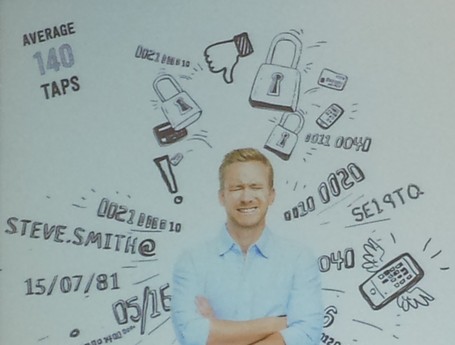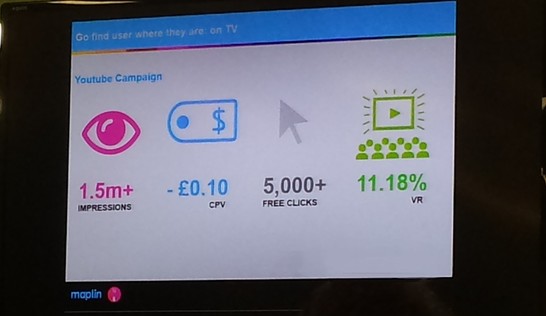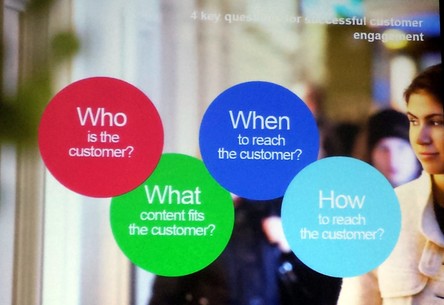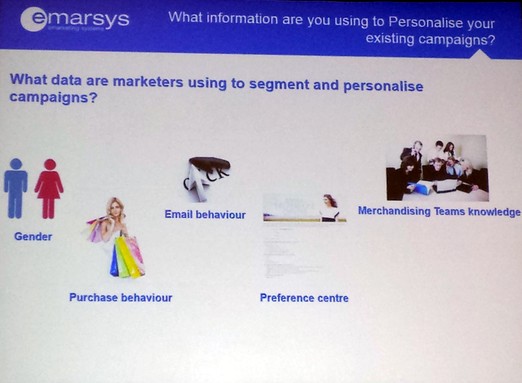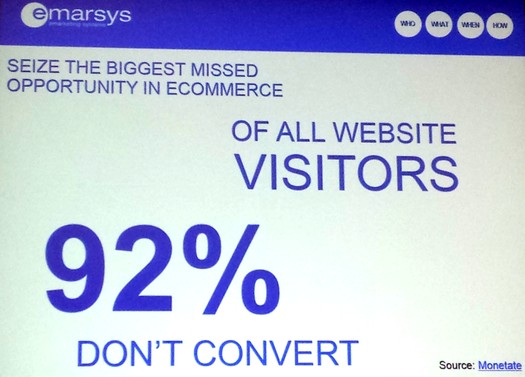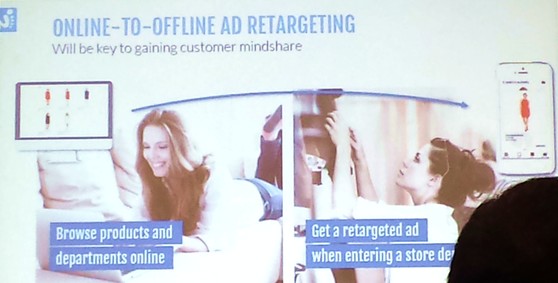More fascinating e-commerce insights for 2015! Expo day 2
Following our hugely popular write-up of the e-commerce expo day 1, here’s what happened on day 2. It’s even better, with fantastic insights on how to be successful in e-commerce in 2015, with advice from Paypal, Maplin and leading successful entrepreneurs!
The future of payments now
Rob Harper, Paypal

Mobile payments are growing rapidly. More and more consumers are using their mobile to purchase. It means they’re buying on their terms and on their device.
However, £1.5bn was lost to uk commerce in the last year! Why? Payment friction is one of the leading reasons why customers leave websites. According to a poll by Harris, 47% of customers failed to complete a purchase as the process was too difficult on their mobile phone. What makes this worse is that 63% of consumers are less likely to buy from the same company through a different purchase channel after abandoning a mobile transaction due to poor performance.
Rob described how on average, it takes the user 140 taps to pay through a smartphone (see Smartphone Steve below).
Of course Paypal were at the expo because they believe they have the solution to this. Using Paypal, the number of taps is reduced to just 19 taps. He claimed it was more convenient, secure and Smartphone Steve doesn’t have the hassle of trying to find his wallet (which a lot of people don’t carry with them all the time, whereas they’ll always carry their mobile). Rob said that 47% of UK Paypal mobile users wouldn’t have made the purchase had Paypal not been available.
Paypal are also expanding into the mobile payments market in the offline retail space – will they be successful?
Driving performance through paid media optimisation and rich content
Michel Koch, Maplin, and Emmanuel Arendarczyk, NetBooster
Hands up if you know who Maplin are! That was one of the first things we were asked and a room full of hands shot up in the air. Apparently we were fairly unusual, as the average percentage of people who recall Maplin, is just 9%. However, just earlier this year, this figure was as low as 3%. They launched a TV campaign which was seen by 70% of tv viewers, pushing up Maplin’s recall rate to the current 9%. The TV ads focussed on Maplin Moments. If you don’t remember the ads, here’s a reminder below (I especially love the first bit, “This guy, let’s call him…. Guy”):
“The customer first, always”
Focus on your audience, on people and their behaviour. Maplin’s motto is “the customer first, always”. Maplin used to only focus on keywords, now they focus not just on people, but people with a certain behaviour.
It may (or may not) come as a surprise to hear that Maplin has a fantastic NPS score. They score second, directly beneath Apple. Beneath Maplin, in order, are First Direct, Amazon and ebay.
Maplin have heavily invested in mobile and TV channels. They advise going to where your customers are. For them, this is YouTube (the second biggest search engine in the world, after Google) and they have invested in the creation of how to videos for YouTube viewers. Video is incredibly powerful and lots of companies have seen increased conversion due to them: ‘1 minute of video is worth 1.8 million words’ Forrester.
Customer engagement trends – how to stay ahead in 2015
Steven Ledgerwood and Saima Alibhai, Emarsys
Steven and Saima, advised that your starting point should be the above 4 key questions: Who is the customer, what content fits the customer, when to reach the customer ad how to reach the customer.
3 key trends of 2015
1. Understanding customer behaviour
Your website gives you 10x more user generated data compared to email alone and is the most up to date data, however the challenge is getting value from this (big) data.
Right time + right content + right person = positive perception + revenue + engagement
For example, if a user comes from facebook to your site, use the right content and language: ‘Thanks for coming from facebook…”
And if the user leaves without purchasing you can now send them an email reminding them to purchase. Then when they come back to your website you would remind them about the item in their basket that they were going to buy as well as some additional cross-sell suggestions.
2. Multichannel personalisation
94% of companies agree that personalisation is critical to future success, however, more than half of companies are not using their CRM data to personalise how they communicate with their customers. 72% understand the importance of personalisation but they don’t know how to do it.
What to use to segment and personalise campaigns: gender, purchase behaviour, email behaviour, preference centre, team knowledge (see pic)
Focus on what people are doing RIGHT NOW.
3. Automate! Automate! Automate!
The biggest opportunity available to marketers and those in e-commerce is the 92% of all website visitors that aren’t converting. Of the 8% who convert only 50% buy again. 8% of customers generate 41% of revenue.
An example was given that if people don’t purchase, you could send them an email, offering them a discount along with photos of other products they might be interested in.
How digital tools will change the in-store shopping experience
Juha Mattson, Walkbase
Juha really was presenting the future of e-commerce and I loved this presentation. It showed how you can now analyse and treat conversion online and offline together to have one overall ROI. Focussing on an omni-channel approach. Physical stores can be measured the same as online:
There are two levels of analysis: crowds and individuals.
Crowds: useful to analyse crowds when opening a new store in a new location, christmas sales, etc.
The in-store sales funnel. How many go past the store, how many come in, how many are engaged. If you run an offline campaign what’s the roi? Footfall and repeat visit patterns. You can now work this out.
Walkbase enables you to compare and benchmark online and offline together. How does it work? It uses wifi, bluetooth, door counters, video cameras to bring you new segmentation insights and rich customer profiles. Once you have this data, you can then engage more with the customer:
Example: Customer browses products online then when they enter a physical store they get these products retargeted to them as ads or offers in-store.
The game changing opportunities in omni-channel retail:
1. Measurability of physical stores
2. Online-offline integration
3. In-store engagement
Walkbase enables retargeting across all devices and was said to be very easy to install. You need to install wifi detectors unless you already have wifi. Walkbase also uses beacons that you place in different locations in the store.
Panel debate
Liam Patterson of TopLAD and Osvaldo Spadano of Elastera
Surprisingly, throughout the expo there was very little mention of going out and talking to customers, researching them and getting to some real, qualitative insights. I suspect this is because most of the presenters were very data driven people / product providers. Refreshingly, the panel session was purely about the personal experiences of two highly successful entrepreneurs. And do you know what they both said was the key thing to their success? Listening to the customer!
I nearly jumped out of my seat and punched the air at this point. Two whole days it took for someone to say, look what really works is actually talking to the customer. Yes data is brilliant and vital but if you don’t get out and talk to real life physical people you’ll never truly understand what your customer thinks, feels, wants, needs and discover what’s at the heart of their interaction with your brand.
Listen to the customer
“Put the customer first is the key thing we learnt” said Liam “really understand your audience”.
Osvaldo was particularly passionate about talking to customers:
“It’s important to listen to your customer, not just rely on the data. It’s a big, BIG mistake.”
Osvaldo described, how it was only by going out and talking to customers and asking lots of questions that he was able to get the real human part of how his product was going to help people. Note: This is only something that can be gathered through real one-to-one conversation.
Beware of feature creep
Liam warned that it’s easy for businesses to become too feature led. He advised stepping back, think about what’s going to move your business forwards for your customers. Do you see how everything comes back to what is best for customers? If you’re only ever looking at data and doing small one-way remote testing, you’ll never get a deep understanding of your customer as a person, and you’ll miss crucial insights that could propel your business forwards.
I’ll conclude this post with advice from Osvaldo:
“It’s very powerful to go and talk to the customer. Try to understand their problem. Why do they want to do something about it? It’s all about problem solving. If you get good at it, you’ll have a good business.”
Did you miss our write-up of day 1? Read our overview of day 1 of the e-commerce expo
Watch out for our next blog post: Your 2015 e-commerce crib sheet.
Share this post:
